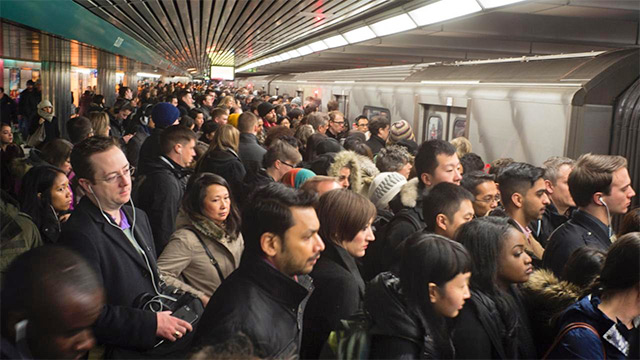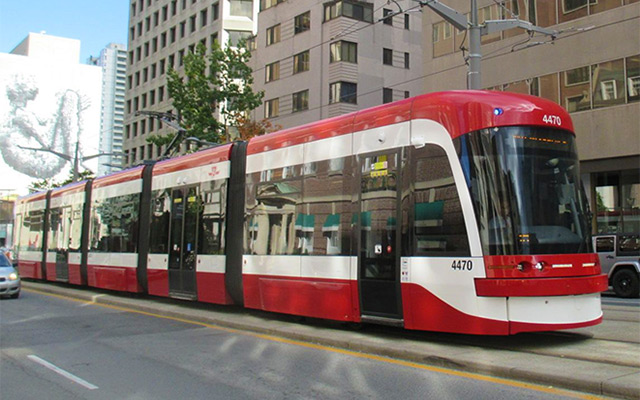
With a population approaching 3 million, Toronto already stands at Canada’s most populated city. Considering the surrounding area, the Greater Toronto Area (GTA), has a population of close to 7 million and considering that the GTA is the destination of around 30% of immigrants to Canada, the city is growing rapidly. While this population growth has led to massive improvements in the city’s financial, social and even cultural aspects, there is one nagging setback that’s prone to crash the city’s overall development: a poor public transport system that made the Toronto commuter system the worst in North America
Why is there such a poor transport system?
Anyone who’s lived in Toronto over the last 10 years would have noticed the gradual spike in traffic within the last one decade. Here’s why: in spite of an upsurge in the city’s population over the past 10 years, there hasn’t been much change in terms of infrastructure in Toronto. It’s a rarity to come across new road networks and the only major work done on the public transit is the extension of the subway to the Pearson Airport. The whole subway system for the city of Toronto is only measuring about 76km similar to the length of the subway in Montreal, which is smaller in size (70% of the size of Toronto). While Montreal housing is more affordable than Toronto, it is expected to have less growth in the coming years because of the language barrier for many new immigrants to Canada.
Beside the poor subway system, it’s sad to note that almost no new highway has been built in Toronto in the last decade, which makes commuting more difficult for Torontonians.
What the poor transit system has led to
Due to this lack of improvement in the transport network to match up with the increased populace, the city’s subway system has witnessed a lot more interruption. Also, almost all major streets in the city are congested with mind-numbing traffic during weekdays as people go to/return from work. What’s the way out of this mess?

Solution 1:
Live close to workplace/subway station
There’s only so much an individual Torontonian can do to change the structure of things in the city, but there’s one thing solely within a resident’s reach; and that’s where he or she chooses to live. Living close to your workplace effectively reduces transit time and helps you to do away with having to use a bus or car to get to your workplace. This is one major reason lots of people in Toronto are choosing to live in the growing number of high rise apartments, with the number of high rises in Toronto (totaled at 2,326) is more than that of London (1,259) and Tokyo (1,058) combined which makes many think that Toronto will surpass New York as high-rise capital of North America! If you’re unable to get an apartment close to where you work, you can at least choose to live somewhere very close to the subway station so you can easily get to work; however this may mean that you live in a smaller and more expensive property.
Solution 2:
Move to the suburbs (where you can use GoTransit)
Living close to work or the subway is likely to be associated with smaller properties and also noisier environment! If you have a large family and want to live in larger detached properties , consider moving to the suburbs. “How do I then commute to work without stress?” For suburbs dwellers who often need to commute to downtown Toronto, GO Transit has been noted to be more reliable as a commuting tool, than TTC or cars.
Before moving into any suburb neighborhood however, it would be wise to discuss with knowledgeable local realtors who have expertise in your desired location who can give you invaluable information on the traffic situation in that neighborhood.
Solution 3:
Work from home
For employees with the option of working from home, especially if they live in such a busy city as Toronto, this is often the best option. Even better, Stanford university research has shown that those who work from home can be more effective than those who work in an office space.
If you can, work for an employer who doesn’t keep the strict, needless rule of having you come into the office all the time when you can easily get the work done regardless of your location. One excellent tip for you is if you’d be working from home a lot, get a spacious property (either rent or buy) so you can allocate enough space to your home office, your ‘work sanctuary’ where tons of effective work can be carried out.
Wrapping up
Toronto’s residents have to take individual steps to create work-life balance for themselves by reducing the amount of time spent in transit (by living close to work, using gotransit and working from home), these steps are not enough to create a radical change in the city’s structure for everyone.
This is why it’s important to support politicians who care about expanding infrastructure via the proper utilization of tax, as Toronto still has the lowest property tax in Ontario even after the recent tax rises. This means there’s still more room for infrastructural improvement that would lead to more ease in commuting.

Comments are closed.